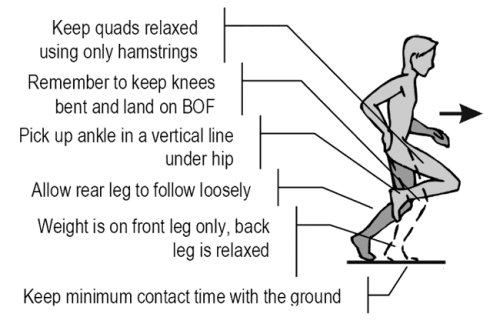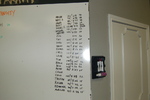Tuesday 2.26.13

As many of you may have read a few days ago, this weekend, Phil and I ran our first half marathon! As a matter of fact, it was our first long run of any sort...up until that point, neither of us had ever run more than 5 or 6 miles. Like one time. The run was 13.1 miles along the beach in the sand of Surfside, TX. Being our first time, the goal was just to finish (which thankfully we accomplished), but afterwards we each had the feeling of....well quite frankly, having our butts kicked. It's too bad there wasn't a camera in our living the rest of that day to capture the two apparent decrepid, old people that were hobbling around our home. We each had such pain in the outside of our knees that I was worried we'd done some serious damage. After talking with some more experienced runners, including one who's run 5 or 6 100+ mile races (whaaaaaaaaat????), I think the knee pain was mostly a result of undertraining and inexperience running in sand. However, it also prompted me to think: could my form have been a factor? I KNOW how to run correctly, but perhaps the lack of training made it difficult for me to EXECUTE this form correctly over the entire run?
Knee and hip pain are frequent complaints in the running community, but in reality, our bodies were designed to run. Run and squat - that's what humans do. However, over time and via super cushy shoes, we condition ourselves out of correct running form. Watch a kid run barefoot in the grass and you'll see correct running technique - but because us adults buy $150 heavily padded running shoes, often times we've trained ourselves out of that natural perfect, pain-free form. What is perfect running form, you say? I'm so glad you asked :) Correct running technique is not based on personal preference or some other subjective matter - it's based on physics. Here's a quick run down of the Pose Technique which is grounded in barefoot running. I don't mean you have to go running barefoot everywhere in order to do this, but what it does say is that your body was designed to run WAY before fancy New Balance running shoes were invented. For instance: your foot is most heavily padded in the upper-middle part, so it makes most sense to land on the padded part of your foot when you run. Why then, are running shoes designed with so much cushion in the heel? So yes, wear shoes when you run for goodness sake. And yes, you should watch this video to learn more. :)
Strength/Skill
10 min to estab. 1RM power snatch
WOD
12-9-6-3
Burpees
Power snatch (95/65)

